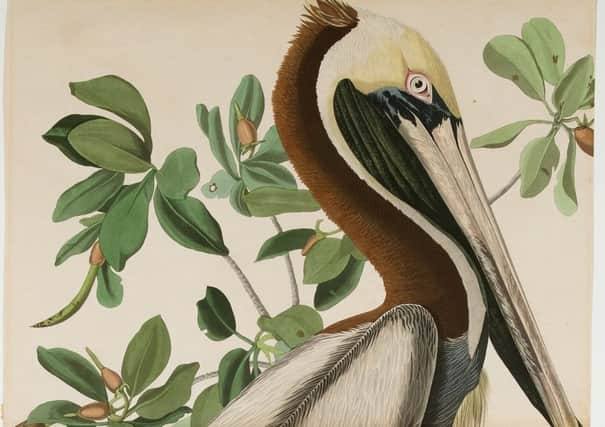History evident in bird plates


Most of the 6000 illustrations are by the foremost European bird artists of the 1800s including John Gould and Edward Lear (known for his ‘nonsense poetry’ such as The Owl and the Pussycat).
Amongst them though are around 100 hand-coloured plates taken from John James Audubon’s Birds of America, a book described today as the most beautiful ever created and the most expensive ever sold at auction.
Advertisement
Hide AdAdvertisement
Hide AdMonetary value was not something that worried Thomas Eyton 170 years ago.
For him, these great bird prints were simply a useful tool: something with which to illustrate his scientific study of bird classifications.
He cut up and folded down his plates to fit them into albums as the uneven edges of the Brown Pelican show.
Sometimes he even made collages, pasting the mutilated prints onto different sheets of paper, and scrawling comments on them.
This though makes them special.
Advertisement
Hide AdAdvertisement
Hide AdFinancial and even aesthetic value has become secondary to the history that is evident in the glue stains and crumpled boarders.
Despite Eyton’s modifications, plates like Brown Pelican remain magnificent examples of workmanship and research. For each of the plates and accompanying texts Audubon observed the lives of the birds and tracked the movements and habitats of the species.
Audubon also gathered information on their food and interactions with humans and other creatures. This plate shows the male pelican perched within an accurate botanical study of the mangrove, a favourite perch for them.
A second plate shows the female perched on a sandy cove, the landscape background describing more of their regular habitats.
Advertisement
Hide AdAdvertisement
Hide AdAudubon was an avid hunter, a pastime he indulged in not wholly due to his research or in pursuit of food.
But having studied the birds in life, he was later able to use specimens to look closely at their anatomy and plumage, and draw them as accurately as possible in huge detail.
This meticulous attention transfers to the plates. Looking closely at the pelican, you can see how some of its plumage is tufty and some of it sleek, and also a frank display of the mess it made on its perch -
Audubon said of it: ‘I must say that, much as I admire it in some respects, I should be sorry to keep it near me as a pet’!
Advertisement
Hide AdAdvertisement
Hide AdAudubon’s Brown Pelican and other plates from Birds of America are on display until April 2018 in the Ruskin Collection at Millennium Gallery.
n Do you have a favourite exhibit from Sheffield’s collections you would like to be featured?
Email [email protected] with the details of the exhibit.